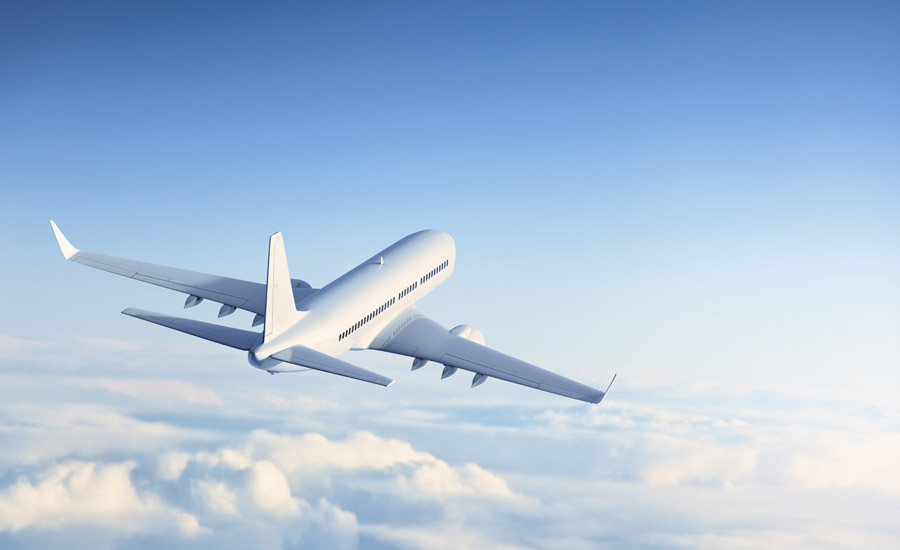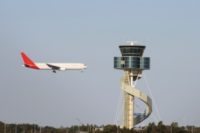A NIOSH Science Blog post
Extramural Spotlight: Airline pilot mental health

In March 2015, Germanwings Flight 9525 crashed into the French Alps, killing all 150 people onboard. An investigation found that the copilot deliberately steered the plane into the mountainside. It also revealed that he had a history of depression. Among workers, untreated depression can affect the ability to perform tasks and—as the Germanwings incident shows—in rare instances, can result in devastating consequences. In one of the first studies of its kind, researchers at the NIOSH-funded Harvard Education and Research Center (ERC) looked at the prevalence of depression among commercial airline pilots.
Researchers used an anonymous web-based survey of pilots recruited from unions, airline companies, pilot groups, and aviation safety organizations to ask about depression and other health issues. Between April and December 2015, 1,837 airline pilots completed the survey. More than 12% of survey respondents who answered the survey’s health questions met the criteria for depression and 4% reported having suicidal thoughts within the prior two weeks. Pilots who reported using medication to aid sleep and who experienced sexual or verbal harassment were significantly more likely to be depressed. The findings were published in the journal Environmental Health.
There are an estimated 140,000 airline pilots internationally with about 70,000 in the U.S.[i] The majority of pilots are male and just over 4% of all pilots are female.[ii] In the U.S., the Department of Transportation, Federal Aviation Administration (FAA) sets requirements for aeromedical examiners (AMEs) to evaluate fitness of pilots. Only through self-disclosure are mental disorders discussed and noted in pilot health records. AMEs do not diagnose mental health conditions. Underreporting of mental health symptoms and diagnoses is probable among airline pilots due to the public stigma of mental illness and fear among pilots of being “grounded” or not fit for duty.
Estimates of depression or depressive symptoms among other high stress occupations include 12% among deployed and 13% among previously deployed U.S. military personnel,[iii] 7% among U.S. emergency medical technicians[iv], and 10–17% among U.S. police officers.[v]. Barriers to seeking treatment for mental health issues among high stress occupations are documented in the literature.[vi], [vii],[viii] Although different in degree and severity of stressors, commercial airline pilots may experience similar occupational and individual barriers to seeking treatment[ix]. These include shift-work, long and continuous hours, and increased stigma towards admitting one has mental health problems resulting from work.
Although this study relied on self-reports and represents a small sample of airline pilots, it indicates that there may be a significant number of working pilots suffering from depressive symptoms. The results highlight the need for the airline industry to increase its support of preventive treatment for depression and other mental health disorders among pilots. However, this study does not change the fact that flying on an airplane is still by far the safest form of public transportation. The next step is to study how sleep and circadian rhythm disturbances affect the risk of depression among this group of workers.
We would like to hear from you. Do you know where to find information on how to help others when they are experiencing depression? If you are an airline pilot, what mental health services (e.g. paid-leave, confidential reporting, leadership advocacy of mental health) does your organization provide for pilots experiencing mental illness? Click here to visit the NIOSH Blog Post web page and leave a comment.
References
[i] U.S. Department of Labor Bureau of Labor Statistics. Airline pilots, copilots, and flight engineers. Occupational Employment Statistics. 2015. http://www.bls.gov/oes/current/oes532011.htm#nat. Accessed 2 Mar 2016.
[ii] Women in Aviation International. Current statistics of women in aviation careers in U.S.: Pilots. 2013. https://www.wai.org/resources/waistats. Accessed 1 Feb 2016.
[iii] Gadermann AM, Engel CCC, Naifeh JA, Nock MK, Petukhova M, Santiago LP, et al. Prevalence of DSM-IV major depression among U.S. military personnel: Meta-analysis and simulation. Mil Med. 2012;177:47–59.View ArticleGoogle Scholar
[iv] Bentley MA, Crawford JM, Wilkins JR, Fernandez AR, Studnek JR. An assessment of depression, anxiety, and stress among nationally certified EMS professionals. Prehosp Emerg. 2013. doi:10.3109/10903127.2012.761307.Google Scholar
[v] Slaven JE, Mnatsakanova A, Burchfiel CM, Smith LM, Charles LE, Andrew ME, et al. Association of sleep quality with depression in police officers. Int J Emerg Ment Health. 2011;13:267–77.Google Scholar
[vi] Houdmont J, Leka S, Sinclair RR. Contemporary occupational health psychology: Global perspectives on research and practice, vol. 2. Oxford: Wiley-Blackwell; 2012.View ArticleGoogle Scholar
[vii] Barling J, Kelloway E, Frone M. Handbook of Work Stress. Thousand Oaks: Sage; 2005.Google Scholar
[viii] Cooper CL. Organizational stress: A review and critique of theory, research, and applications. Thousand Oaks: Sage; 2001.Google Scholar
[ix] Bor R, Field G, Scragg P. The mental health of pilots: An overview. Couns Psychol Q. 2002. doi:10.1080/09515070210143471.Google Scholar
Looking for a reprint of this article?
From high-res PDFs to custom plaques, order your copy today!





.jpg?t=1721257160)
